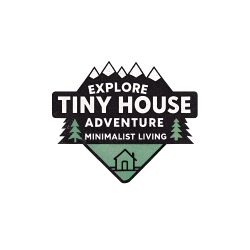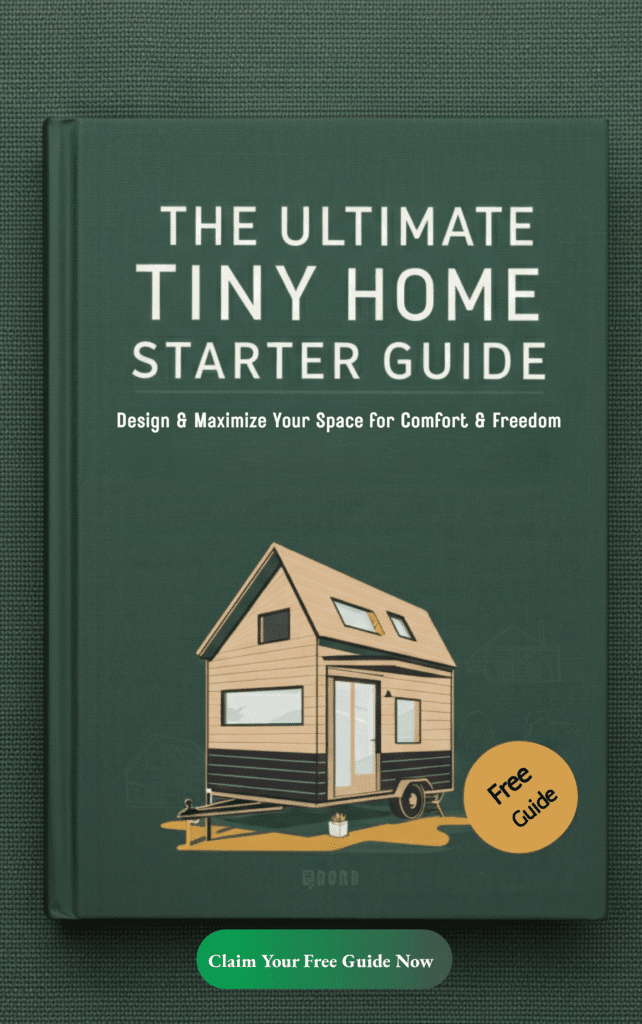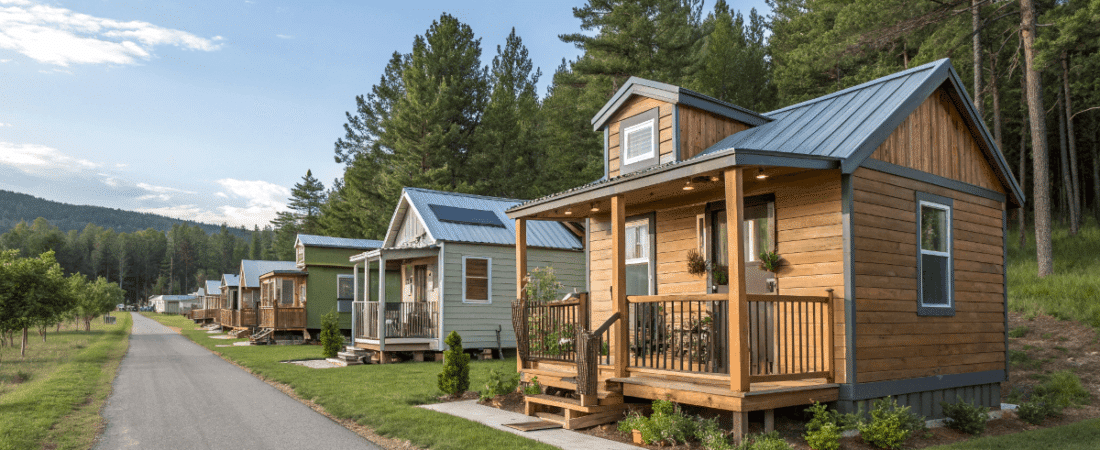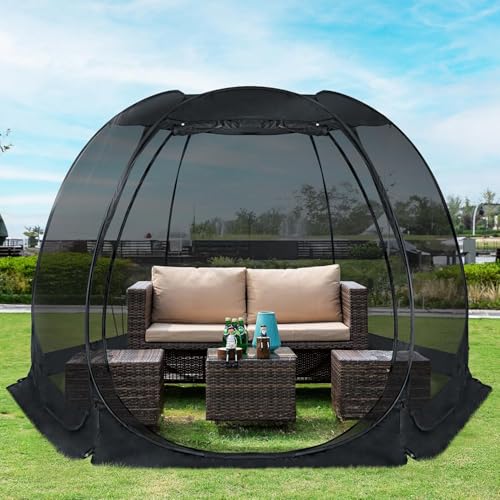Self contained tiny homes allow you to live independently with their own energy, water, and waste systems. In this article, discover the top 10 self contained tiny homes, their benefits, key features, costs, and real-life experiences from owners.
- Key Takeaways
- What is a Self Contained Tiny Home?
- Benefits of Living in a Self Contained Tiny Home
- Essential Features of Self Contained Tiny Homes
- Top 10 Self Contained Tiny Homes for Modern Off-Grid Living
- Designing Your Own Self Contained Tiny Home
- Cost Considerations
- Finding Land for Your Self Contained Tiny Home
- Maintaining a Self Contained Tiny Home
- Real-Life Experiences
- Summary
- Frequently Asked Questions
Key Takeaways
Self-contained tiny homes offer sustainable living with essential amenities, promoting a fulfilling off-grid lifestyle.
Choosing a tiny home can lead to financial savings through reduced living expenses, lower taxes, and minimal maintenance.
Essential features like solar power systems, rainwater collection, and efficient waste management are key to maximizing sustainability in tiny living.
What is a Self Contained Tiny Home?
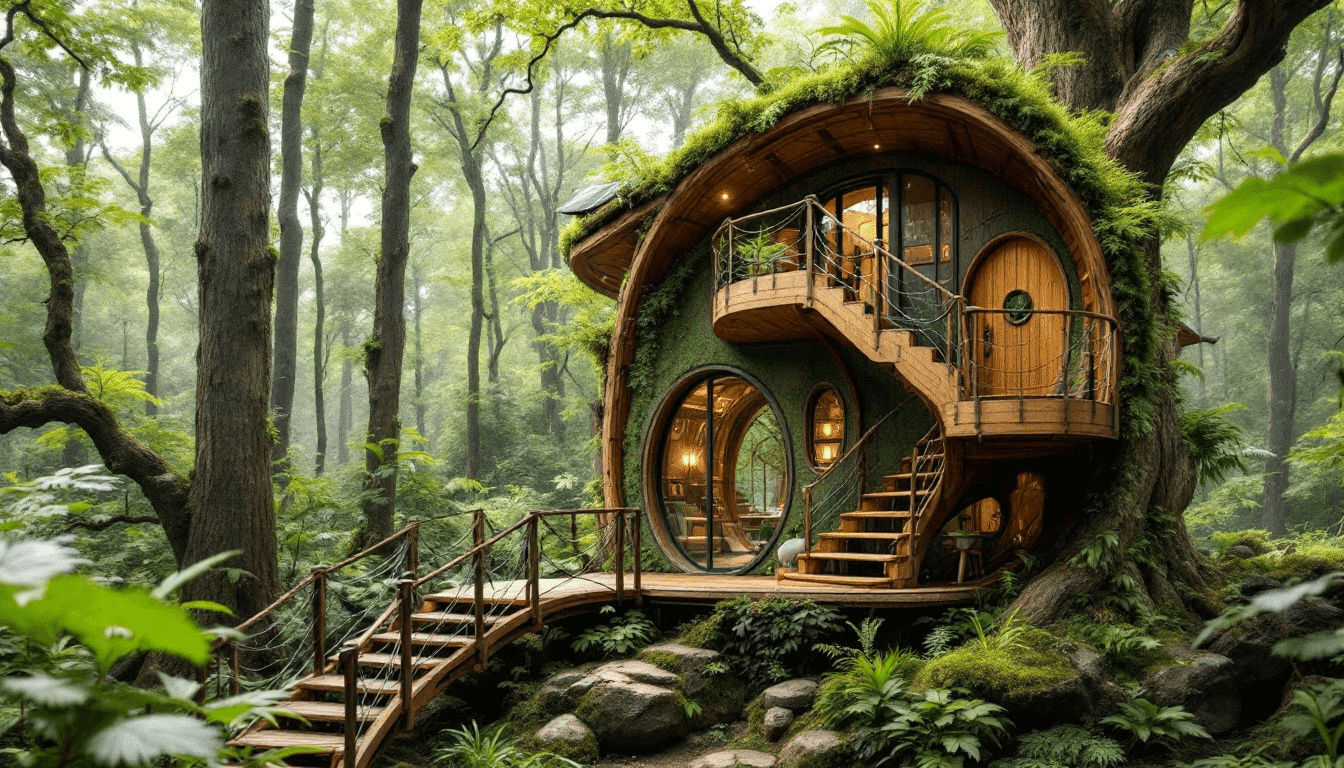
A self-contained tiny home is more than just a small structure; it’s a marvel of efficiency and sustainability. Typically ranging from 100 to 400 square feet, these tiny houses are designed to support a fully self-sufficient lifestyle. Equipped with systems for energy, water, and waste management, they enable residents to live independently of traditional utilities.
Mint Tiny Homes exemplify this concept with their move-in-ready units that offer off-grid options. These homes are tailored for those who crave the freedom of off-grid living while enjoying the comforts of a well-designed living space.
The essence of tiny living lies in its ability to provide a fulfilling lifestyle without compromising on essential amenities.
Benefits of Living in a Self Contained Tiny Home
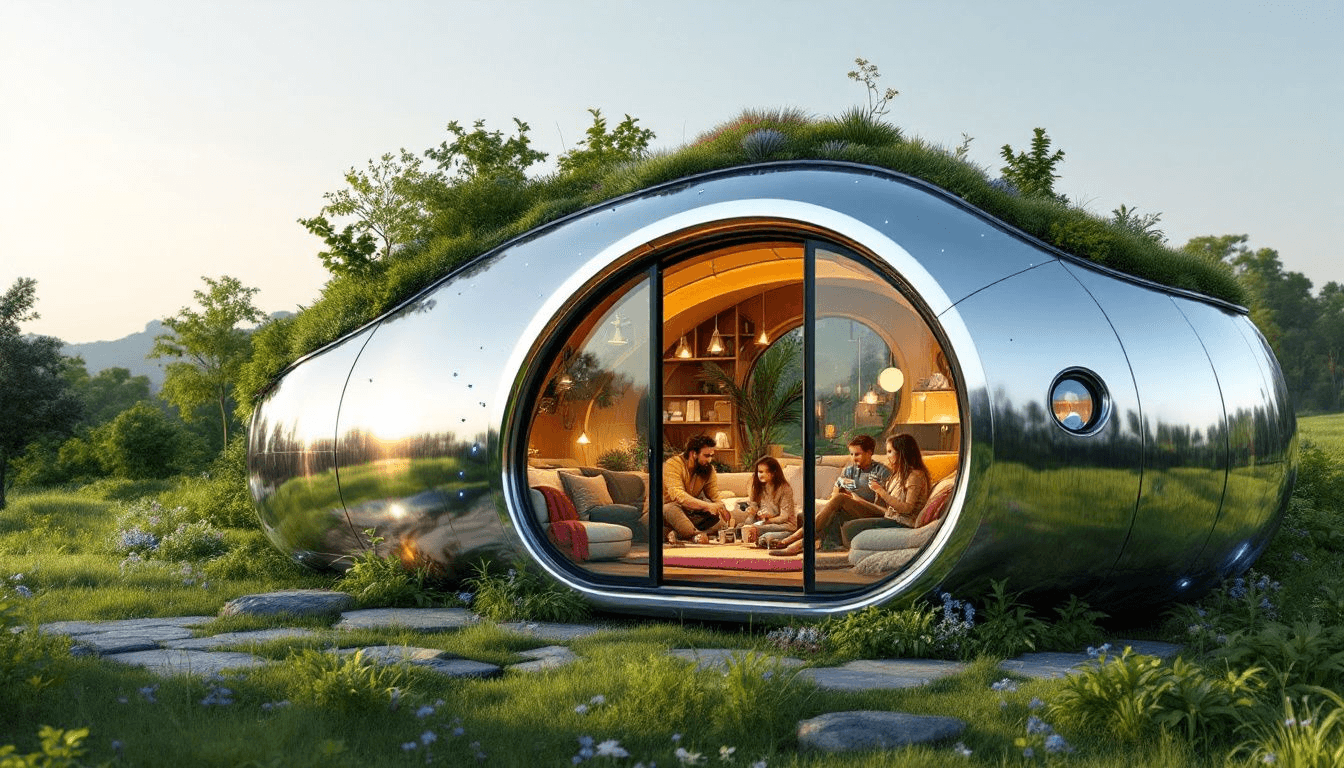
Living in a self-contained tiny home brings a host of benefits that extend beyond the allure of minimalism. One of the most compelling advantages is sustainability. Tiny homes require fewer resources like electricity and water, resulting in a significantly reduced carbon footprint. This smaller size not only leads to a reduced environmental impact but also promotes energy efficiency by requiring less energy to heat and cool the space.
Financially, tiny homes are a smart investment. They typically have lower insurance and property taxes, contributing to overall savings. The reduced living expenses stem from the smaller living space, which demands less maintenance and upkeep. Additionally, the cost of building or purchasing a tiny home is often much lower than traditional homes, making them an attractive option for many to save money.
Beyond economics and sustainability, tiny homes encourage a simpler, more organized lifestyle. The limited space necessitates minimalism, leading to less clutter and a more purposeful use of possessions. For those seeking a dream tiny home that offers both self-sufficiency and a reduced environmental impact, the benefits of tiny living are hard to overstate.
Essential Features of Self Contained Tiny Homes
Certain features are paramount to making a tiny home truly self-contained. Utilizing multi-functional furniture is crucial to optimize the limited space available. Built-in storage solutions also enhance functionality and keep the living area clutter-free. Effective insulation is necessary for maintaining energy efficiency, especially crucial in off-grid living.
The orientation of the tiny home should be planned to maximize solar gain for natural heating. High-quality battery storage is important to ensure a steady power supply.
The ability to move easily is a significant advantage, allowing tiny homes to be relocated with relative ease compared to traditional mobile homes. These features collectively ensure that tiny homes are not just smaller versions of traditional houses but are uniquely designed for efficient, independent living.
Solar Power Systems
Solar power is the cornerstone of an off-grid tiny home. Solar panels are essential for generating electricity, making them a foundational element of these homes. Many tiny homes are equipped with eco-friendly technologies like solar panels to promote sustainable living. A properly sized solar panel system is necessary to power a tiny house off-grid, ensuring that all electrical needs are met.
Living in a tiny home significantly lowers energy consumption due to their inherently energy-efficient design. Solar generators can be used for powering appliances and systems, providing a reliable and eco-friendly power source.
Periodic cleaning of the solar panels is essential to maintain optimal energy production. These systems, along with rainwater harvesting, are pivotal for those seeking a fully self-contained, off-grid lifestyle.
Water Supply Solutions
Managing the water supply in a tiny home often involves renewable resources. Rainwater collection systems allow these homes to gather and store rainwater, which can then be filtered for safe consumption. These systems must be regularly inspected for blockages and leaks to ensure they function effectively.
Regular maintenance of water filtration systems is essential for providing safe drinking water. These homes often utilize renewable resources like rainwater to enhance self-sufficiency, making them ideal for off-grid living.
Efficient water management is a key aspect of living sustainably in a tiny home.
Waste Management
Waste management in tiny homes requires innovative solutions. Composting toilets are a popular choice as they require no water and convert waste into compost for gardening. These toilets need to be emptied and maintained to ensure effective waste breakdown.
Greywater systems are another essential feature, filtering and reusing water from sinks, showers, and washing machines. These systems should be cleaned periodically to prevent clogs and bad odors.
Waste management is a critical aspect of living in self-contained tiny homes and often requires creative solutions to handle waste efficiently.
Top 10 Self Contained Tiny Homes for Modern Off-Grid Living
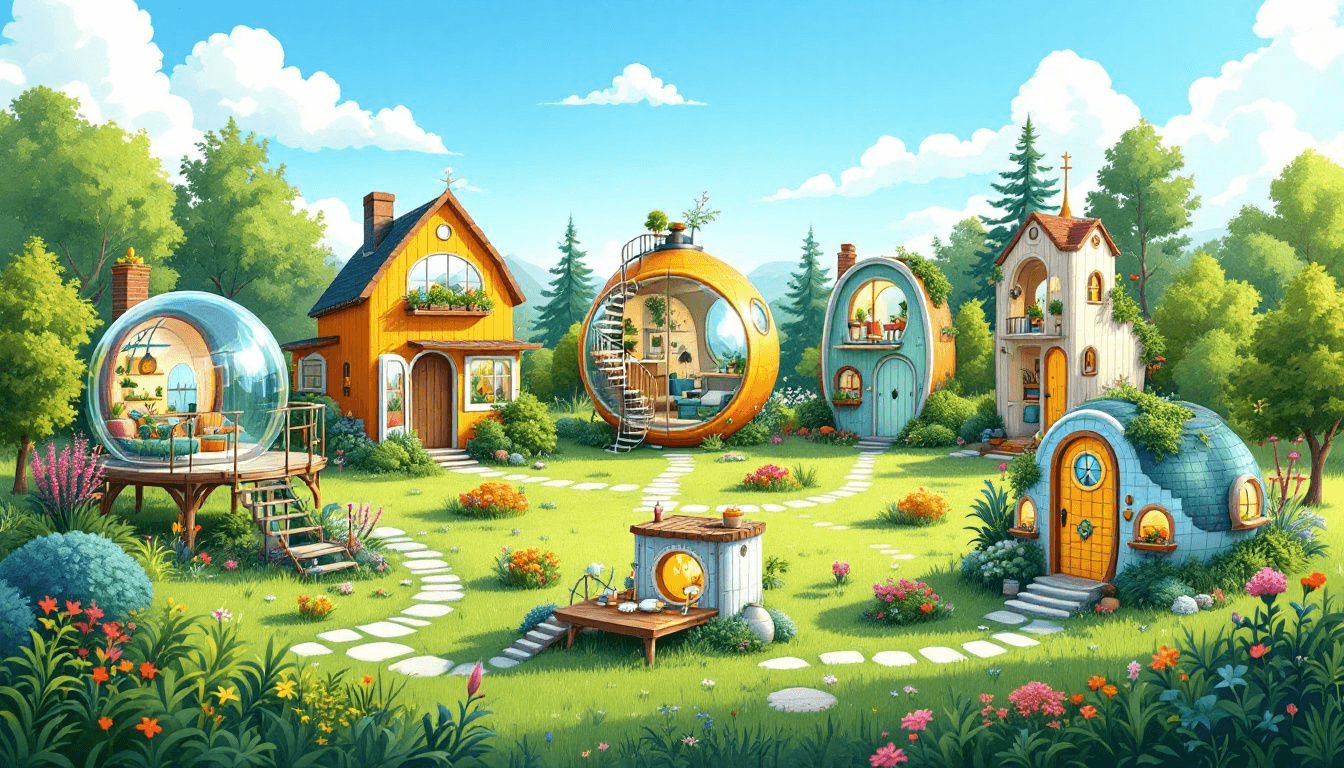
Exploring the top ten self-contained tiny homes available today offers a glimpse into the diverse options that cater to various needs and preferences. Each model brings unique features designed to enhance off-grid living, from innovative energy solutions to space optimization.
These homes are crafted with the modern off-grid enthusiast in mind, ensuring comfort, sustainability, and functionality. Whether you’re seeking a rustic retreat or a contemporary haven, the following list showcases the best of what’s available in the tiny home market.
Tumbleweed Tiny House Company
Tumbleweed Tiny House Company specializes in designing and manufacturing self-contained tiny homes, offering various models tailored for off-grid living. These tiny house RVs range from $85,000 to $125,000+, providing a variety of options to suit different budgets.
Each Tumbleweed home is hand-crafted to ensure quality and durability, making them ideal for those seeking a dream tiny home that combines functionality with aesthetic appeal. Their designs emphasize sustainability and efficient use of space, catering to the needs of modern off-grid living.
New Frontier Tiny Homes
New Frontier Tiny Homes focuses on creating affordable luxury tiny homes that emphasize intentional living and sustainability. These homes are designed to promote meaningful living experiences for their inhabitants.
With a commitment to sustainable construction and design, New Frontier offers homes that are not only beautiful but also eco-friendly. Their tiny homes can achieve RVIA & PWA certification, ensuring they meet high standards of safety and quality.
Mint Tiny Homes
Mint Tiny Homes emphasizes sustainability in designing tiny living spaces. Their units prioritize energy efficiency, providing eco-friendly solutions for those seeking an off-grid lifestyle.
Mint Tiny Homes offers move-in ready units, making it easy for individuals to transition to tiny living without the hassle of extensive setup. Their designs focus on optimizing space and incorporating sustainable materials, ensuring a comfortable and environmentally conscious living experience.
Escape Traveler
Escape Traveler offers a variety of self-contained tiny homes designed for modern off-grid living, featuring innovative designs and essential amenities. Their homes range from $37,556 to $99,015+, catering to different budget ranges.
Escape Traveler homes are shipped throughout the continental USA, making them accessible to a wide audience. These homes are designed to provide a comfortable and sustainable living space, perfect for those seeking a modern off-grid lifestyle.
Tiny Heirloom
Tiny Heirloom specializes in customizable tiny homes that are ADU-certified for full-time living. These homes are designed specifically for full-time living, making them versatile and functional.
With a focus on high-quality materials and unique style, Tiny Heirloom offers homes that are not only beautiful but also practical for everyday use. Their designs cater to those seeking a dream tiny home that combines luxury with functionality.
Studio Shed
Studio Shed emphasizes sustainability by sourcing FSC-certified wood and promoting recycling in their production. Their backyard tiny homes are designed for quick installation and a sustainable living experience.
The price range for Studio Shed’s homes is between $20,100 and $119,000, providing affordable options for those looking to embrace tiny living. Their designs focus on creating a comfortable and eco-friendly living space.
Wheelhaus
Wheelhaus tiny homes feature rustic and modern design elements, high ceilings, oversized windows, and eight-foot doors. These homes exceed the US Green Building Council Gold insulation standard, ensuring energy efficiency.
The price range for Wheelhaus homes varies from $149,000 to $174,000 and above, reflecting their high-quality construction and design. A unique feature that can be added to Wheelhaus homes is an outdoor deck, enhancing the living experience.
Jamaica Cottage Shop
Jamaica Cottage Shop provides a range of affordable pre-cut kits specifically designed for tiny homes. These kits are an economically savvy choice for individuals looking to build their own tiny homes.
The kits are ideal for creating self-contained setups, making them suitable for off-grid living. Jamaica Cottage Shop offers delivery within a 300-mile radius, ensuring accessibility for customers.
Tiny Cocoons
Tiny Cocoons offers energy-efficient designs made from recycled materials, accommodating up to eight people. Their homes are suitable for families or groups, providing a spacious and comfortable living environment.
The price range for Tiny Cocoons homes starts at $51,500 and can exceed $225,000 depending on features and customization. Their designs focus on reducing the carbon footprint and using natural materials, making them an eco-friendly choice.
Mustard Seed Tiny Homes
Mustard Seed Tiny Homes provides modular and park model designs, focusing on modern features and customization. Their homes are designed to be plugged into local utilities after delivery, ensuring ease of installation and setup.
Prominent models like The Sprout and The Harvest offer comfortable layouts and modern designs, catering to small families and individuals seeking a stylish and functional tiny home. The Sycamore and Dogwood models provide additional space, making them ideal for larger families or those needing more living space.
Designing Your Own Self Contained Tiny Home

Designing your own tiny home is a rewarding but challenging process. The design stage is crucial for ensuring efficiency in limited space and avoiding future regrets. Planning is critical to avoid design missteps, especially due to the limited space available in tiny homes. When designing, it is important to consider factors such as room size and count. Additionally, home orientation, roofing type, insulation, and the use of eco-friendly materials play a crucial role.
High-quality building materials, such as structural insulated panels (SIPs) and reclaimed or recycled materials, are recommended for constructing tiny homes. When building your own A-frame tiny house, it’s important to have good plans and material estimations. Even small design mistakes can lead to significant regrets later on, underscoring the importance of careful consideration in design.
Cost Considerations
Prices for tiny homes can range from DIY kits at $10,000 to over $200,000 for custom builds. The average national tiny home cost is approximately $46,670, with most people spending between $30,000 and $53,335. Building a stationary tiny house typically costs around $53,250, factoring in the price of the foundation.
For mobile tiny homes, the average cost is about $57,500, including the trailer, which itself costs around $7,000. Labor costs for building a tiny home can account for 15% to 45% of the overall expenses.
Construction materials for tiny homes generally cost an average of $35,415, but using recycled materials can lower this cost. Utility installation costs for a tiny home, including electrical and plumbing, can add an additional $4,605. Tiny home kits can be purchased for around $7,430, making them one of the most affordable options for construction.
Finding Land for Your Self Contained Tiny Home
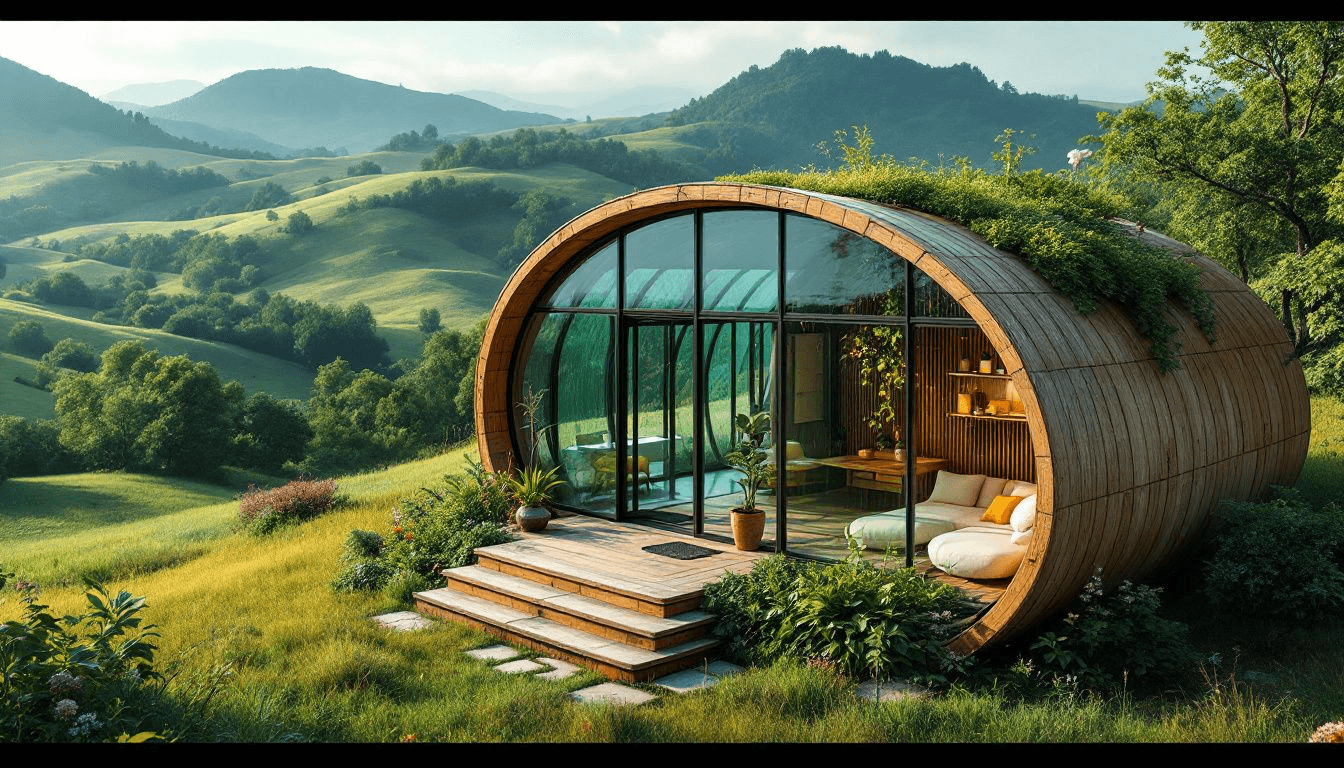
Finding the perfect plot of land for your tiny home can be an exciting yet challenging process. Options include privately owned land, tiny home communities, and RV parks. Renting land from acquaintances can be an attractive arrangement, provided clear agreements address utilities and access rights.
Accessory Dwelling Units (ADUs) can be a cost-effective alternative, as they typically require fewer permits when constructed on existing properties. Ensuring compliance with local ordinances enhances the chances of successfully acquiring land for a tiny house. Investigating zoning for residential use is critical when choosing a location for a tiny home. Engaging with local communities through platforms like Facebook and Reddit can provide valuable insights and tips for navigating zoning regulations.
When setting up land for a self-contained tiny home, important considerations include internet access, infrastructure, security, and utilities. Investigating water rights is essential when purchasing land, as access to water sources can vary significantly by location. Buying land directly is a straightforward option; however, it’s crucial to investigate local zoning and building regulations before making a purchase.
Maintaining a Self Contained Tiny Home
Maintaining a self-contained tiny home involves regular care and attention to its unique systems. By sizing solar panels to meet the power needs of the lowest production day in winter, you can effectively manage off-grid living during winter. The clean water tank capacity of 100L ensures an adequate water supply for a self-contained tiny home.
Each tiny home is equipped with a water filtration system that is essential for maintaining a clean and safe water supply. A SeaFloat water pump is used to circulate water efficiently in self-contained tiny homes. Proper insulation is vital for maintaining a comfortable temperature in tiny homes, helping to reduce energy consumption. Using eco-friendly cleaning products is recommended for maintaining a tiny home, promoting sustainability.
Important systems to maintain in a tiny home include water filtration systems and composting toilets to ensure proper waste management. Regular maintenance of these systems is crucial to ensure they function effectively and sustainably, enhancing the overall living experience in a tiny home.
Real-Life Experiences
Living in a tiny home is a unique experience that comes with its own set of challenges and rewards. Building a tiny house can be mentally taxing, often leading to feelings of isolation and stress due to the demands of the project. The initial excitement of completing a tiny home can sometimes be overshadowed by ongoing issues, such as faulty electrical systems and lack of heating.
Many builders of tiny homes experience regret during the construction phase, questioning their decisions due to the challenges involved. However, creating a tiny house can foster a sense of ownership and empowerment, as individuals learn to build and fix their own living spaces. Living in a tiny house can lead to a profound appreciation for conventional homes, highlighting the complexity and comfort they provide.
The cost of maintaining a tiny house can be lower than renting an apartment, but unexpected expenses can arise, affecting financial stability. Despite these challenges, the lifestyle changes and financial benefits make tiny living a rewarding experience for many.
Summary
Exploring the world of self-contained tiny homes reveals a lifestyle that is both sustainable and liberating. From understanding what makes a tiny home self-contained to the benefits of tiny living, essential features, and top models available, there is a wealth of information to guide you on this journey. Designing and maintaining your own tiny home involves careful planning and consideration, but the rewards are well worth the effort.
In conclusion, tiny living offers a unique opportunity to embrace simplicity, reduce your environmental footprint, and achieve financial freedom. Whether you’re looking to build your own tiny home or purchase an existing model, the insights and tips shared in this guide will help you make informed decisions and embark on your tiny living adventure with confidence.
Frequently Asked Questions
What is a self-contained tiny home?
A self-contained tiny home is a charming and efficient living space that typically spans 100 to 400 square feet, equipped with everything you need for a sustainable lifestyle, including energy, water, and waste management systems. Embrace the freedom and simplicity these homes provide!
What are the benefits of living in a tiny home?
Living in a tiny home offers sustainability, lower costs, and a simpler, more organized lifestyle. Embracing this lifestyle can lead to reduced environmental impact and increased energy efficiency, making it an exciting choice for many!
How is water managed in a self-contained tiny home?
In a self-contained tiny home, water management is effectively achieved through rainwater collection and filtration systems, providing a sustainable and safe supply. This approach not only conserves resources but also enhances your living experience in a compact space!
What are some top models of self-contained tiny homes?
Some top models of self-contained tiny homes are from Tumbleweed Tiny House Company, New Frontier Tiny Homes, and Mint Tiny Homes, providing great options for off-grid living. You’ll find unique features in each, ensuring there’s something for everyone’s dreams!
How much does it cost to build or buy a tiny home?
Building or buying a tiny home can be quite affordable, with DIY kits starting around $10,000 and averages around $46,670, while custom builds can go over $200,000. There’s a variety of options to fit your budget and preferences!
